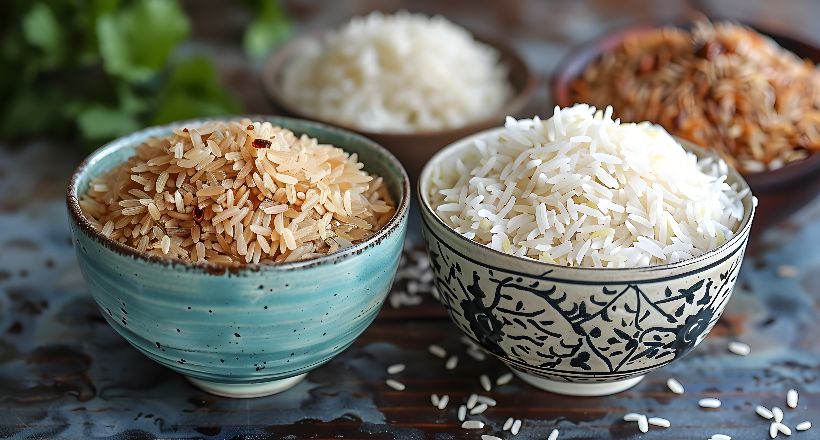Brown Rice vs. White Rice
October 14, 2025
“What is the real difference?”
——-
Rice is one of the most widely consumed foods in the world, serving as a daily staple for more than 3.5 billion people, according to National Geographic. Cultivated in Asia for over 3,000 years, rice thrives in warm, wet climates and remains essential to diets across Asia, Latin America, and parts of Africa. While rice is primarily a source of carbohydrates, it also provides small amounts of protein and nearly no fat – making it an important but simple source of energy for billions of people.
The biggest nutritional debate surrounding rice often centers on brown versus white. Brown rice is considered a whole grain because it retains all three parts of the kernel -the bran, germ, and endosperm. White rice, by contrast, has the bran and germ removed, giving it a softer texture and quicker cooking time. While brown rice takes longer to prepare, it offers slightly higher amounts of fiber, antioxidants, and minerals such as magnesium and phosphorus. White rice, however, is often fortified with iron and vitamin B after processing, which helps offset some of those differences.
Nutritionally, the contrast is modest. A cup of cooked brown rice contains about 218 calories compared to 242 in white rice, but it delivers more fiber -1.6 grams versus 0.4 grams. Brown rice also has a lower glycemic index, making it a steadier energy source for those managing blood sugar. Still, both forms can be part of a healthy diet when eaten in moderation. The choice often comes down to personal taste, cooking time, and dietary needs – proof that sometimes, even small nutritional differences can influence what ends up on the dinner table.





